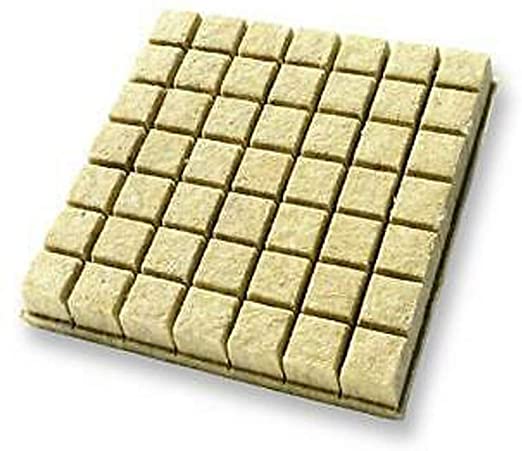The title to this article may sound counter intuitive since growing medias are sold as “sterilized” media. But once you realize that microbes are everywhere, it doesn’t sound so strange. Growing media is often sterilized to prevent disease-causing microbes from growing in the media during shipping or storage. However, the first time you open a package of media you are exposing it to the microorganisms around you, on you (your skin) or in you (your breath). Water and fertilizer expose the media to even more microbes, especially if you are using well water that is not sterilized. If your greenhouse has disease, fungal or bacterial problems, those have just been exposed the media to these as bad microbes well. It seems that if you don’t sterilize everything and work in clean rooms and clean suits that you will have a mess on your hands. One of the reasons bacterial pests invade greenhouses and wipe them out is because so many items are brought in that are sterile, leaving them free of competition and open for population by various microbes.

Microbes work by using competitive exclusion. Basically, through competing for food sources the microbes eat quickly and start to secrete compounds that help other similar microbes begin to thrive. Since they reproduce so quickly (some as little as every 30 seconds!), before long there is a thriving population. When there is no competition, the first thing that is present will establish itself. Additionally since microbes reproduce so quickly they can also mutate quickly, developing resistance to certain things they may be exposed to. Disinfectants and other antibiotics are some things that microbes have developed resistance to. Although they are designed to kill pathogens, these disinfectants frequently kill the weaker good microbes too. When they are killed the balance of good vs. bad is destroyed. If allowed to thrive and compete naturally, these good microbes would normally work to out-compete the bad microbes (pathogens). In hospitals the balance is off because most of the people coming into hospitals are sick, bringing a cocktail of various bad microbes and viruses that can easily establish themselves because the environment has been sanitized with various synthetic chemicals.
To venture even further from growing plants, relate this to your body. When you get sick with a bacterial infection you take an antibiotic. These antibiotics kill all the microbes in your body. Some of these microbes have been in your body since birth. Scientists have been studying pathogens for centuries, developing stronger and stronger antibiotics to kill “stronger and stronger” microbes. But, they are not necessarily “stronger”. These microbes have developed resistant genes, or mutations that make them immune to the previous generation of antibiotics. When you take an antibiotic you are going to kill the organisms that are making you sick as well as most of the good microbes that you need to survive. When the antibiotic cycle is complete there is a clean slate (on a microbial level) with lots of food (what you ingest as food) to feed whatever lands there first. Since we don’t live in a sterile world we want to populate the area with a bunch of good microbes that will begin to secrete various compounds that are beneficial to us. If we are not proactive in this step, the likelihood of bad microbes populating the area is high. This is a great time to use a probiotic (a potent mixture of good microbes) to make sure good microbes get an upper hand and establish themselves in the body before the bad ones can.
How does this apply to growing media and plants? Any time you have a sterile environment (packaged growing media or steamed soil), you have an opportunity to have some type of microbe establish itself. You obviously want the good ones there. Good microbes will establish themselves when they are applied regularly as part of a growing program. Unlike harmful microbes that tend to grow out of control, good microbes grow to certain stages and move into semi-dormancy and stop growing. This is why you need to be regularly applying the good microbes. Good microbes produce byproducts (metabolites including bioavailable vitamins, trace minerals, enzymes, and co-enzymes, oxygen gas, etc.) that are beneficial to living organisms, including other good microbes (bacteria, yeasts, and fungi) as well as beneficial insects. Harmful microbes produce toxic byproducts such as methane and hydrogen sulfide gasses that can kill plants or damage them, making them susceptible to pests and disease. So, when you are starting with a clean slate, get the good microbes established as soon as possible to give your plants the upper hand.
Every conventional grower knows the cycles they see their plants go through when troubles start. The scenario is you have a fungal outbreak in one area of the greenhouse. So, you grab a fungicide, say for Xanthamonus spp. and spray three times. It doesn’t quite kill off the fungus so you now have to use a slightly stronger fungicide and spray that three times. Now you start to notice white fly as well. You now need to spray for those, but have to wait because of your pesticide application rules limit you to cycles and combinations of chemicals. Meanwhile your plants are yellowing; you are starting to see an increase in leaf miner, wilting and dying crops. Before you know it, you are throwing your plants away, cleaning out the greenhouse, having to sterilize the building before anything else goes in there. I recently spent three days visiting growers in California who each relayed a similar story regardless of the crop they were growing. We got one grower thinking and she decided to take on a different approach. Here is a bit of her story:
Debbie grows roses for cut flowers in Southern California. She has been using EM•1® Microbial Inoculant for a few years in addition to a regular fungicide and pesticide program. After running into various problems over the years she decided she was going to test one 5-acre greenhouse on a completely biological program. She combined EM•1® with two Metarhizium-based products (one a registered pesticide with the EPA) in a sprayer and sprayed her plants weekly. She also put a few packets of some beneficial insects in the greenhouse. Debbie uses a conventional fertilizer blend and did not change the fertilizer program. At two months of applications we walked the greenhouse, taking leaf samples and harvest numbers from rows with different varieties and planting dates. The results without the use of any synthetic pesticides or fungicides were amazing, with zero stress signs on any of the plants. The introduced beneficial insect populations had grown. Even some beneficial insects that were not introduced and had not been seen on the property in years were showing up on leaf samples. Additionally the costs of production were a fraction of the same crop grown using conventional pesticides. Her greenhouse managers said they love working with the biological program because it keeps their sprayers clean and they do not have to worry at all about exposure.
Growing with a strictly biological program is possible. It requires regular applications of mixed good microbes, a solid nutrient program, and attention to detail. In essence, good management is a must. As with any successful business, without good management failure is inevitable. Good management is going to catch problems at the outset and take the proper approach to prevent an outbreak. Good microbes are a tool that will help with your success. The biological approach takes some trial and error to be customized to your operation. Mix biologicals into what you are currently doing and don’t throw common sense out the window. A grower who pays attention to details normally has the most success. When you introduce sterile growing media it is a good idea to start applying good microbes immediately and regularly to get the upper hand. Synthetic pesticides have a place and should be a last resort, not a maintenance program. A solid nutrient program combined with a biological component will improve the overall health of your plants, giving them a solid foundation to bounce back after a pest or disease attack. So, before you reach for the next bottle of some type of “____cide”, think about mutations and resistance or past experiences of a downward chemical spiral that might be avoided with a pro-biotic approach.
Eric Lancaster is the Executive Vice President of TeraGanix, Inc., the exclusive North American distributor of Effective Microorganisms® and EM® Bokashi products. To learn more about Effective Microorganisms, please visit TeraGanix.com.
Related Articles & Free Email Newsletter
Dealing with Fertilizer Powders
Organic Versus Conventional Cloning




Comment here